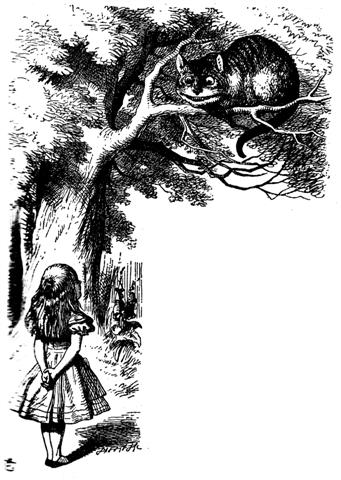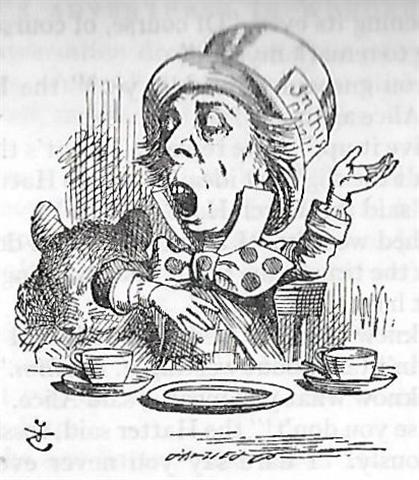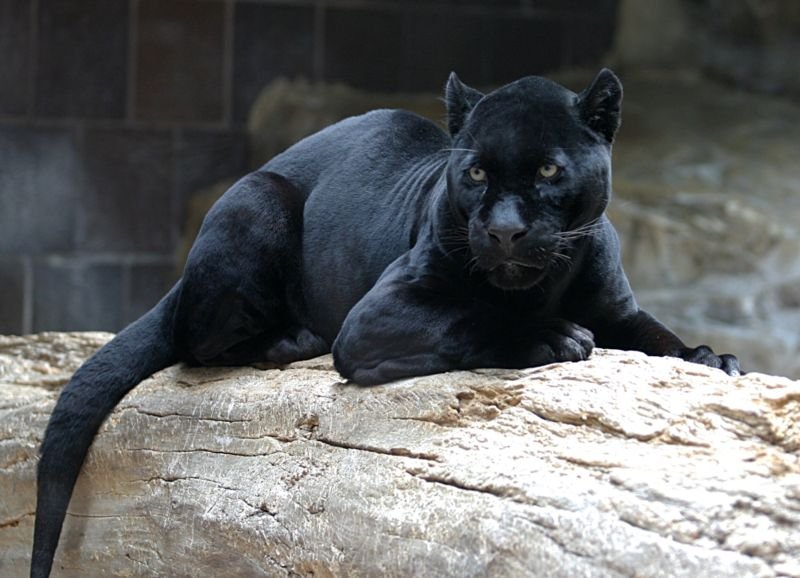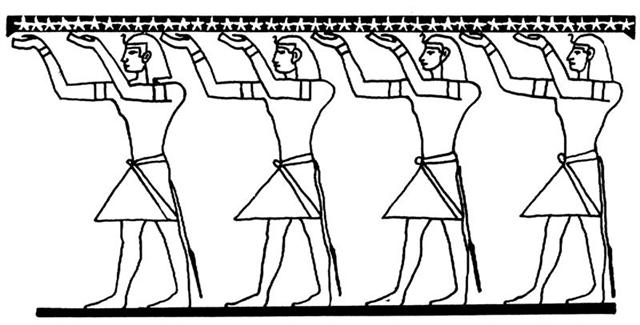The Mayas shifted their
attention from one side of the year to the other by adding
168:
Reasonably it meant they here saw the year as divided into
periods with 168 / 7 = 24 weeks.
1820 / 168 = (1848 - 28) / 168
→ 11 * 168 - 28 = 10 * 168 + 140
(24 weeks - 4 weeks):
In a year there was room for 2 * 168 = 336 days = 48 weeks.
364 = 48 + 4 = 52 weeks = 13 * 28 days
Anciently they saw the month (ideally) as 4 weeks:
... Ancient calendar-makers seem to have interposed the
day which had no month, and was therefore not counted as
part of the year, between the first and last of their
artificial 28-day months:
so that the farmer's year lasted, from the
calendar-maker's point of view, literally a year and a
day ...
The fabric of the ideal cosmos was based on tradition and
carefully preserved, and therefore possible to be perceived by
everyone. It was a Holy Graphic:
... The subject has the nature of a
hologram, something that has to be present as a whole to the
mind.¹
¹ In optics, 'hologram' is the
interference patterns of light with itself; i.e.,
every part of an image is
displayed at every point, as if every point looked at
every source of light ...
And therefore it was necessary to define e.g. the location of
Betelgeuze as 168 days counted from the beginning of the
Gregorian year:
|
14 |
114 |
214 |
314 |
414 |
|
5 (large
calabashes full of flies) * 214
→
1070 → 471
(glyphs on the G tablet) - 364 |
|
74 + 14 |
88 + 100 = 188 |
288 |
388 |
488 |
|
BETELGEUZE (*88) |
ALGORAB |
NUNKI (*288) |
υ Andromedae
(*22) |
HEAP OF FUEL |
|
ETAMIN (*271) |
ANKAA (*5) |
ω Gemini (*105) |
HEZE (*205) |
HEAVENLY RAFT |
364 (14 * 26) - 354 (12 * 29½) = 10 is a fact which could have motivated the
creator of the G text to locate the
atariki glyph at
Ga1-24 corresponding to APRIL 14 instead of
10 positions
later in his text:
|
APRIL 12 |
13 (468) |
14 (104) |
15 (*390) |
16 (*26) |
 |
 |
 |
 |
 |
|
Ga1-22 |
Ga1-23 |
Ga1-24 |
Ga1-25 |
Ga1-26 |
 |
 |
 |
 |
 |
|
Gb6-5 (229 +
158) |
Gb6-6 (388) |
Gb6-7 |
Gb6-8 (161
→
φ) |
Gb6-9 (391) |
|
PLACE OF THE SUN: |
|
μ
Columbae (86.1),
SAIPH
(Sword) = κ Orionis (86.5),
τ
Aurigae,
ζ
Leporis (86.6) |
υ
Aurigae (87.1),
ν
Aurigae (87.2),
WEZN (Weight) =
β
Columbae,
δ
Leporis (87.7),
TZE (Son) =
λ
Columbae
(87.9) |
Ardra-6 (The Moist One)
/
ANA-VARU-8 (Pillar to sit by)
χ¹
Orionis,
ξ
Aurigae (88.1),
BETELGEUZE = α Orionis
(88.3),
ξ Columbae (88.5),
σ
Columbae (88.7)
ZUBEN ELGENUBI (α Librae)
|
η
Leporis (89.0),
PRAJA-PĀTI (Lord of Created Beings) =
δ
Aurigae,
MENKALINAN (Shoulder of the Rein-holder) =
β
Aurigae, MAHASHIM (Wrist) =
θ
Aurigae,
and
γ
Columbae (89.3),
π
Aurigae (89.4),
η
Columbae (89.7)
*48.0 = *89.4 - *41.4 |
μ Orionis (90.3),
χ² Orionis (90.5) |
|
June 15 |
16 |
17 (168 → 2 *
84) |
18 |
19 (*90) |
|
°June 11 |
12 |
13 (*84) |
14 (165) |
15 |
|
'May 19 |
20 |
21 (*61) |
22 (142) |
23 |
|
"May 5 |
6 |
7 (127) |
8 |
9 (*49) |
|
THE NAKSHATRA
VIEW: |
|
OCT 11 |
12 |
13 |
14 |
15 (288) |
|
KELB ALRAI (Dog of the Shepherd) =
β
Ophiuchi,
μ
Arae (268.1),
KEW HO (Nine Rivers) =
μ
Herculis
(268.6),
η
Pavonis (268.7),
APOLLYON =
ι
Scorpii
(268.9) |
MULIPHEN (Oaths) = γ Ophiuchi (269.0), BASANISMUS =
G Scorpii
(269.5),
PHERKARD (Dim One of the Two Calves) =
δ
Ursae Minoris
(269.9) |
PTOLEMY CLUSTER = M7 Scorpii
(270.5),
GRUMIUM (Lower Jaw) = ξ Draconis
(270.9) |
RUKBALGETHI GENUBI (Bending Claw) = θ Herculis
(271.1),
ξ Herculis (271.5),
ETAMIN (Head) =
γ
Draconis,
ν
Herculis (271.7),
ν
Ophiuchi (271.8) |
CAT'S EYE = NGC6543 Draconis
(272.2),
ζ Serpentis (272.4),
τ
Ophiuchi (272.9) |
 |
|
Dec 14 (*268) |
15 |
16 (350) |
17 |
18 |
|
°Dec 10
(*264) |
11 |
12 |
13 |
14 (348 → 208
+ 140) |
|
'Nov 17
(*241) |
18 |
19 |
20 |
21 (325) |
|
"Nov 3 (*227) |
4 |
5 |
6 (310) |
7 |
 |
 |
 |
 |
 |
|
Ga8-1 (204) |
Ga8-2 |
Ga8-3 |
Ga8-4 |
Ga8-5 (208) |
On the other hand, he must also locate the culmination
(at 21h) of Betelgeuze at a place of prominence:
... Allen has documented all his star
culminations at 21h, which could be due to an effort of
keeping the culminations at their proper places according to
the ancients, 24h (spring equinox) - 21h = 3h = 24h / 8 =
45º. 3h corresponds to 366 / 8 = 45.75 of my right ascension
days and *366 - *46 = *320 (Dramasa, σ
Octantis) ...
|
NOV 25 (329 → Antares) |
26 (*250) |
27 (366 - 35) |
 |
 |
 |
|
Gb1-20 (249 →
Antares, *249) |
Gb1-21 (→ 121
→ Beltane) |
Gb1-22 |
|
PLACE OF THE
SUN: |
|
μ²,
μ¹
Oct. (313.2),
DENEB CYGNI (Tail of the Swan) = α Cygni
(313.5),
β
Pavonis (313.6),
δ
Delphini (313.8) |
Al Sa’d al Bula'-21 (Good Fortune of the
Swallower) /
Dhanishta-24 (Most Famous)
/
Girl-10 (Bat)
YUE (Battle-Axe)
=
Ψ
Capricorni
(314.3),
GIENAH CYGNI =
ε
Cygni,
η
Cephei (314.5),
γ
Delphini (314.6),
σ
Pavonis (314.7),
ALBALI =
ε
Aquarii
(314.8)
BETELGEUZE (α Orionis) |
BATEN ALGIEDI (Belly of the Goat) = ω Capricorni
(315.8) |

... ε,
3.4, was Al Bali, the brightest one of
the 21st manzil, Al Sa'd al Bula', the
Good Fortune of the Swallower, which included
μ and ν;
these last also known as Al Buläān in the
dual. Kazwini said
that this strange title came from the fact that
the two outside stars were more open than
α and β
of Capricorn, so that they seemed to swallow, or
absorb, the light of the other! ...
"The corresponding sieu, Mo, Mu, Niu, Nü,
or Woo Neu, a Woman, anciently written Nok, was
composed of these stars with the addition of
another, unidentified, ε being the determinant;
and the same three were the Euphratean lunar
asterism Munaχa, the Goat-fish, and the Coptic
Upeuritos, the Discoverer ..." (Allen) |
|
Jan 28 (393) |
29 (*314) |
30 |
|
°Jan 24 (389) |
25 (*310) |
26 |
|
'Jan 1 (366) |
2 |
3 (*288) |
|
"Dec 18 |
19
(*273) |
20 (354) |
|
... And then the bone spoke;
it was there in the fork of the tree: Why do you
want a mere bone, a round thing in the branches
of a tree? said the head of One Hunaphu when it
spoke to the maiden. You don't want it, she was
told. I do want it, said the maiden. Very well.
Stretch out your right hand here, so I can see
it, said the bone. Yes, said the maiden. She
stretched out her right hand, up there in front
of the bone. And then the bone spit out its
saliva, which landed squarely in the hand of the
maiden. And then she looked in her hand, she
inspected it right away, but the bone's saliva
wasn't in her hand. It is just a sign I have
given you, my saliva, my spittle. This, my head,
has nothing on it - just bone, nothing of meat.
It's just the same with the head of a great
lord: it's just the flesh that makes his face
look good. And when he dies, people get
frightened by his bones. After that, his son is
like his saliva, his spittle, in his being,
whether it be the son of a lord or the son of a
craftsman, an orator. The father does not
disappear, but goes on being fulfilled. Neither
dimmed nor destroyed is the face of a lord, a
warrior, craftsman, an orator. Rather, he will
leave his daughters and sons. So it is that I
have done likewise through you. Now go up there
on the face of the earth; you will not die. Keep
the word. So be it, said the head of One and
Seven Hunaphu - they were of one mind when they
did it ...
 |
|
THE NAKSHATRA
VIEW: |
|
MAY 26
(146 → *130 + 16) |
27 (330 -
183 = 147) |
28 (148 → 80 + 68) |
|
Al Nathrah-6 (Gap)
BEEHIVE (Exhalation of Piled-up
Corpses) = M44, ε Cancri, η Pyxidis (130.4),
XESTUS = ο Velorum
(130.5), ζ Pyxidis (130.7),
ASCELLUS BOREALIS = γ Cancri,
β Pyxidis (130.9)
*89.0 = *130.4 - *41.4 |
Extended Net-26a (Ox)
/
Arkū-sha-nangaru-sha-shūtu-12 (Southeast Star in
the Crab)
η Hydrae (131.0),
ASCELLUS AUSTRALIS = δ Cancri (131.4),
KOO SHE =
Bow and
Arrow
=
δ
Velorum
(131.6),
α
Pyxidis (131.8),
ε
Hydrae (131.9)
*90.0 = *131.4 - *41.4 |
ι Cancri (132.0), ρ Hydrae (132.4)
*91.0 = *132.4 - *41.4 |
 |
 |
 |
|
Ga3-7 (66 → *130 - 64) |
Ga3-8 |
Ga3-9 |
|
July 29 (146 + 64 = 210) |
30 |
31 (395 -
183 = 212) |

'Twinkle, twinkle, little bat!' // How
I wonder what you're at!'
Vero.
To throw, to
hurl (a lance, a
spear). This
word was also
used with the
particle kua
preposed:
koía kua vero i
te matá, he
is the one who
threw the
obsidian
[weapon].
Verovero, to
throw, to hurl
repeatedly,
quickly
(iterative of
vero).
Vanaga. 1.
Arrow, dart,
harpoon, lance,
spear, nail, to
lacerate, to
transpierce (veo).
P Mgv.: vero,
to dart, to
throw a lance,
the tail;
verovero,
ray, beam,
tentacle. Mq.:
veó,
dart, lance,
harpoon, tail,
horn. Ta.:
vero, dart,
lance. 2. To
turn over face
down. 3. Ta.:
verovero, to
twinkle like the
stars. Ha.:
welowelo,
the light of a
firebrand thrown
into the air. 4.
Mq.: veo,
tenth month of
the lunar year.
Ha.: welo,
a month (about
April).
Churchill. Sa.:
velo, to
cast a spear or
dart, to spear.
To.: velo,
to dart. Fu.:
velo,
velosi, to
lance. Uvea:
velo, to
cast; impulse,
incitement. Niuē:
velo,
to throw a spear
or dart. Ma.:
wero,
to stab, to
pierce, to
spear. Ta.:
vero,
to dart or throw
a spear. Mg.:
vero,
to pierce, to
lance. Mgv.:
vero,
to lance, to
throw a spear.
Mq.:
veo,
to lance, to throw a spear. Churchill 2. |
And an ideal location would be day 314 (→
the number for π) and it had to be displayed
by an eye-catching extraordinary glyph which ought
to be associated with some well-known myth:

... The
jaguar learned from the
grasshopper that the toad
and the rabbit had
stolen its fire while it
was out hunting, and that
they had taken it across the
river. While the jaguar was
weeping at this, an anteater
came along, and the jaguar
suggested that they should
have an excretory
competition. The anteater,
however, appropriated the
excrement containing raw
meat and made the jaguar
believe that its own
excretions consisted
entirely of ants. In order
to even things out, the
jaguar invited the anteater
to a
juggling contest, using
their eyes removed from the sockets: the anteater's eyes
fell back into place, but the
jaguar's remained hanging at the top of a tree, and so
it became blind. At the request of the anteater, the macuco
bird made the jaguar new eyes out of water, and these
allowed it to see in the dark. Since that time the jaguar
only goes out at night. Having lost fire, it eats meat raw.
It never attacks the macuco - in the Apapocuva version, the
inhambu bird, also one of the Tinamidae ...

|
.jpg)















